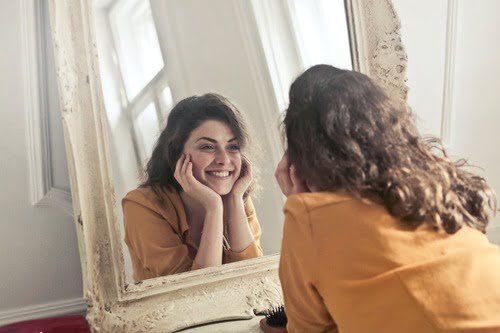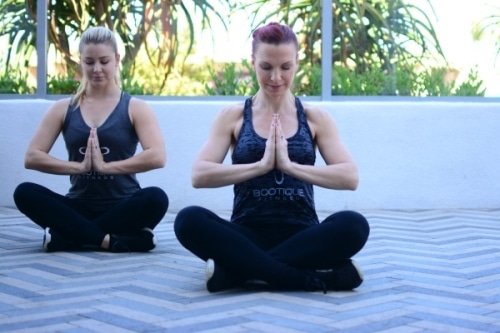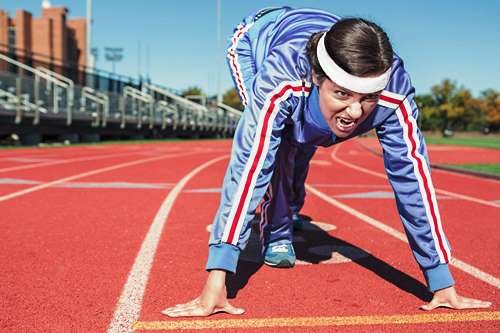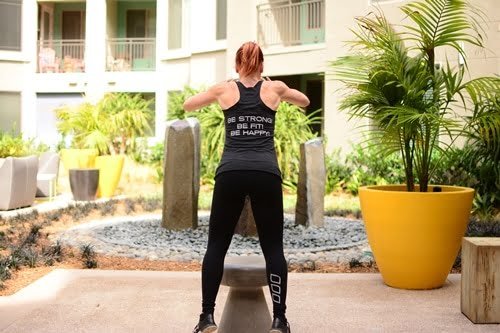How To Access Your Progress
Body Composition Measurements
Tracking progress is important to your overall success. However, it is also very important that it does not become an obsession. While looking in the mirror, feeling the difference in the way your clothes fit and how your body feels are excellent indicators of your success, you may want more concrete evidence that your healthy habits are working for you. Re-assessing monthly is a good way to track your progress.
We recommend that you record your base measurements during your first week of class. You can do it yourself or ask your trainer to do an assessment for you.
Objective Measurements for an Assessment
Great objective indicators of your success can be measured by your scale weight, body fat percentage and circumference measurements. See below for how to measure these areas.
It’s not all about the numbers
How do the exercises feel?
As you become more fit, your strength and endurance will improve. What may have been very challenging for you a few weeks ago has now become really easy. These improvements in performance will allow you to increase your intensity during your training, thereby increasing the results you get from training.
How do your clothes feel?
Another way you can measure progress is by how your clothes feel. Try on a pair of jeans that were very tight before joining class and see how they feel. This method tends to provide a tremendous amount of satisfaction that the scale often does not. Try on the same pair of clothing periodically to see how they are fitting (but it is important not to become obsessed with it as are all forms of measuring progress).
How are your energy levels?
Do you feel like you have more energy? This is one result from class that most will feel right away. Exercise makes your body run more efficiently and improves your sleep. If you do not feel an increase in energy it is often linked to your eating habits and perhaps you should consult your fitness professional for help.
How is your state of mind?
How is your attitude? How do you feel toward exercise? Do you feel good about your goals? Do you come to exercise in a good mood? Exercise should be something you enjoy if you want to achieve results for the long term. A positive attitude is a person’s best tool for compliance to a program. You may start class not sure if you are able to do the workouts. Normally, after a couple of workouts, you begin to develop confidence and that is where your personal growth occurs. Stretching comfort zones is a huge factor in class. When those comfort zones are pushed, initially there is some resistance, but over time everyone who has stayed the course and pushed through times of uncertainty, has accomplished more than they ever imagined.
Progressing will keep you motivated
Body composition is an integral component of total health and physical fitness but don’t forget to notice and acknowledge improvements in energy, performance, self-esteem, and the many other benefits you’ll gain from this healthier lifestyle: improvements in health risk factors and medical conditions, improved quality of life and psychological functioning, healthier eating, and more enjoyable physical activity. Good luck: We hope you enjoy all the wonderful benefits of a healthy, active lifestyle.
Tools to assess yourself
In addition to the detailed instructions on how to measure your body, you will also find a chart for healthy body weight and ideal body fat percentage. Remember, it’s not all about the numbers. There are several subjective components that can provide a lot of feedback for you as well. Fitting into your skinny jeans, being energized all day and feeling good about yourself wonderful ‘side-effects’ of your new fitness program!
[fusion_builder_container hundred_percent=”yes” overflow=”visible”][fusion_builder_row][fusion_builder_column type=”1_1″ background_position=”left top” background_color=”” border_size=”” border_color=”” border_style=”solid” spacing=”yes” background_image=”” background_repeat=”no-repeat” padding=”” margin_top=”0px” margin_bottom=”0px” class=”” id=”” animation_type=”” animation_speed=”0.3″ animation_direction=”left” hide_on_mobile=”no” center_content=”no” min_height=”none”][accordian][fusion_toggle title=”Body fat Calculation” open=”no”]
Calculate your body fat percentage to measure the difference between your scale weight and your body fat weight. This one number can change the way you look at diet and exercise forever.
When we assess our clients, we use an electronic body fat scale, a technology called bioelectrical impedance (BEI) to measure body fat. A very light, unnoticeable electrical current is passed through the body. The body fat will repel the current while all lean tissue will act as a conductor, leaving the percentage repelled as your estimated body fat percentage.
This method is highly dependent on consistent levels of body water, something that is not often consistent. For example, your measurements may be off if you just exercised or are dehydrated, if you have a different level of body water than when you last measured, or if you take your body fat in the morning, and then again in the evening. In other words, in order to get consistent readings, you have to be consistent in your measurement practices; this is what we recommend:
Body water is at its most stable point every day first thing in the morning before eating and drinking anything. This is the optimal time to measure your body fat if possible. Another recommendation is to only measure at most twice monthly. There are too many fluctuations that happen from one day to the next, and it’s flat out psychological torture to be stepping on the scale every day.
[/fusion_toggle]
[fusion_toggle title=”Body Fat Percentage Table” open=”no”]
| Body fat rating scale | Women | Men |
|---|---|---|
| Competition Shape (“ripped”) | 9-12% | 3-6% |
| Very Lean (excellent) | <15% | <9% |
| Lean (good) | 16-20% | 10-14% |
| Average (fair) | 21-25% | 15-19% |
| Below average (poor) | 26-30% | 20-25% |
| Major improvement needed (Very poor) | 31+% | 26+% |
[/fusion_toggle]
[fusion_toggle title=”Height and Weight Table for Women” open=”no”]
| Height | Small Frame | Medium Frame | Large Frame |
|---|---|---|---|
| 4’10” | 102-111 | 109-121 | 118-131 |
| 4’11” | 103-113 | 111-123 | 120-134 |
| 5’0″ | 104-115 | 113-126 | 122-137 |
| 5’1″ | 106-118 | 115-129 | 125-140 |
| 5’2″ | 108-121 | 118-132 | 128-143 |
| 5’3″ | 111-124 | 121-135 | 131-147 |
| 5’4″ | 106-118 | 115-129 | 125-140 |
| 5’5″ | 117-130 | 127-141 | 137-155 |
| 5’6″ | 120-133 | 130-144 | 140-159 |
| 5’7″ | 123-136 | 133-147 | 143-163 |
| 5’8″ | 126-139 | 136-150 | 146-167 |
| 5’9″ | 129-142 | 139-153 | 149-170 |
| 5’10” | 132-145 | 142-156 | 152-173 |
| 5’11” | 135-148 | 145-159 | 155-176 |
| 6’0″ | 138-151 | 148-162 | 158-179 |
Weights at ages 25-59 based on lowest mortality. Weight in pounds according to frame
(in indoor clothing weighing 3 lbs.; shoes with 1″ heels)
[/fusion_toggle]
[fusion_toggle title=”How To Take Circumference Measurements” open=”no”]
It is important not to rely on the scale for all evidence of your progress. You will often see a loss of inches even if the scale isn’t moving. Make sure you record your measurements to see how your body changes over time.
Consistent measuring practices ensure consistency and accuracy in your measurements. Take your measurements first thing in the morning, before you eat or drink anything (if you are at home). To ensure accuracy, measure your circumference in exactly the same place every time.
Measure these 4 areas accurately
Waist: Measured at the navel. Be sure you’re standing upright and breathing normally with the abdomen relaxed.
Hip: Measured at the widest circumference around the hips.
Thigh: Measured at the halfway point between the center of the kneecap and your hip bone protrusion.
Upper Arm: Measured halfway between the elbow and the bony point on the top
of your shoulder. [/fusion_toggle][/fusion_accordion]
[/fusion_builder_column][/fusion_builder_row][/fusion_builder_container]








